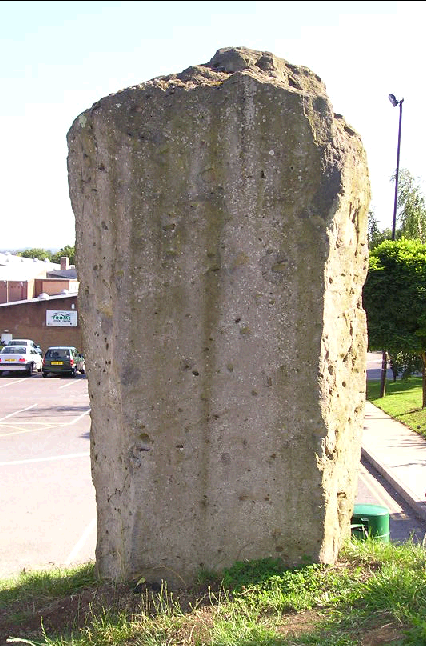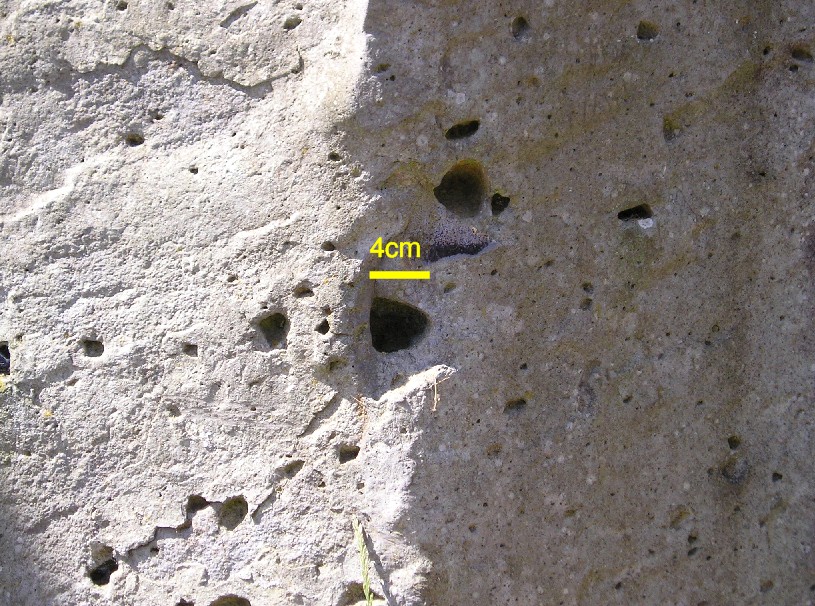About the rock: The first impression of this monolith will probably be its squared shape, with surfaces pock-marked with deep and rounded outline cavities. There are at least five flat surfaces, giving it an overall hexagonalish cross section. It is a single columnal from one of those Giant’s Causeway-style complexes. The shape is a cooling pattern developed in thick iron-rich basaltic lavas. Those pock-marks are gas escape holes as the entrapped gases broke through the stiffening external surface of the column. Some holes are filled with yellowish mineral crusts surviving from the final cooling stages.
This is all very familiar and text-book, but these near hexagonal columns should be cause for thought. First there is the perfection of their shape continued through what must have been a substantial flow (perhaps 2-3 metres thick?). We are told that columns develop about ‘centres of cooling’, shrinking inwards, the hexagon joint surfaces pulling apart from those adjacent. Why should they be so regular and equal-sized? Why should they persist through the flow from top to bottom? Why don’t the cooling surfaces of top and bottom exert some influence upon their size as the lava chilled either to the air, or the base surface?
|
Place of origin: The Vogelsburg is a massive shield volcano to the east of the Rhenish ‘slate mountains’ of the middle Rhine, to the north of Frankfurt. It is situated at the northern end of the Rhine Fault Graben structure, crustal fractures which elsewhere have been the focus of volcanic outbreaks (the Eifel, or the nearby Spessart). The Vogelsburg columnar sheets were eventually seen to be formed in eruptions similar to those of Etna and Vesuvius as witnessed and recorded in the 18th century by Goethe and other early observers. They saw these Rhineland outcrops truly as evidence for volcanoes in past times. The eruptions were actually of Miocene age (c.13 million years), a consequence of the crustal disturbances associated with the formation of the Alps many kilometres to the south..
|

